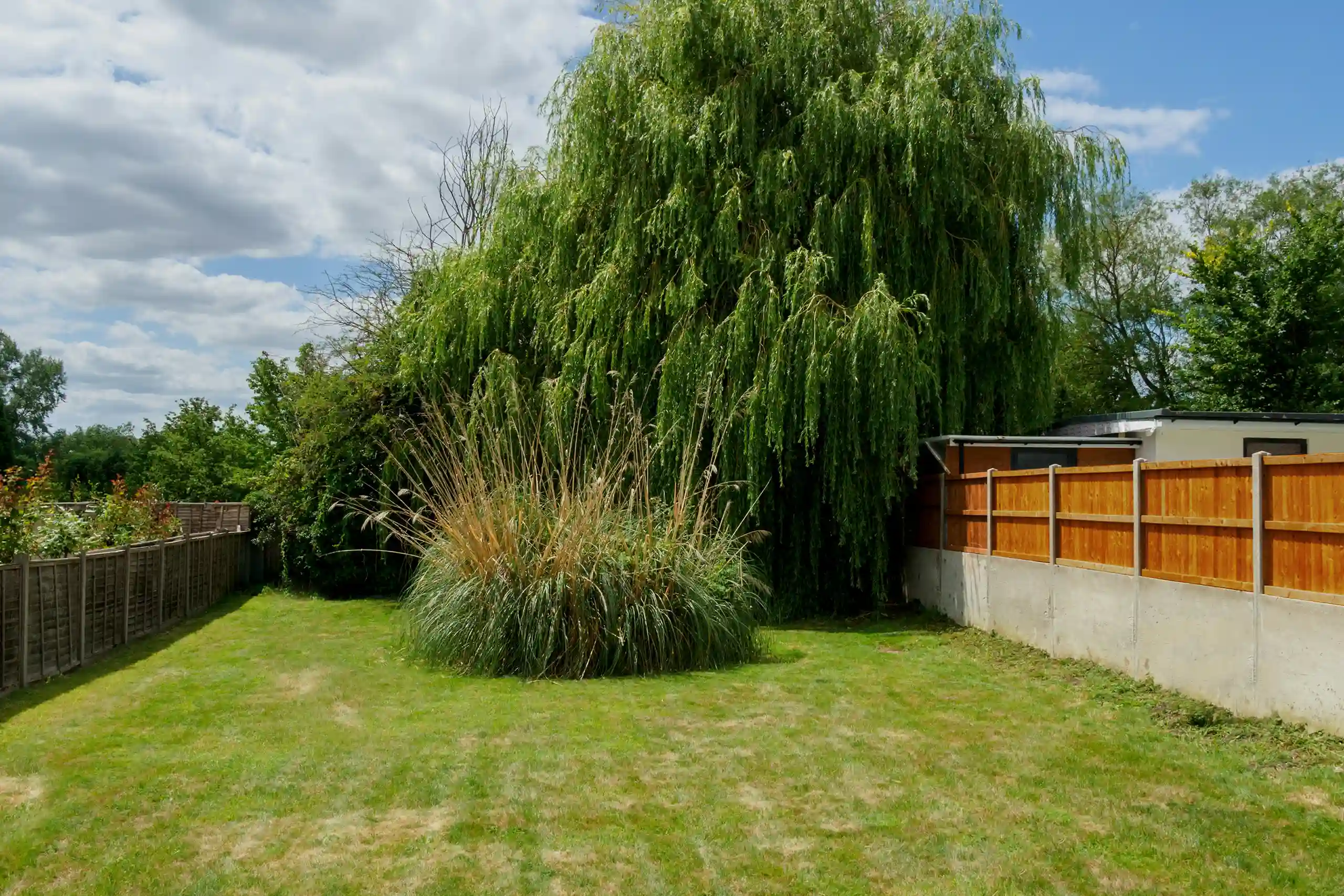You have provided regular and dedicated care to your lawn, so why have brown patches started appearing?
Don’t despair; these unsightly patches are a very common issue, even for the most seasoned gardeners.
Continue reading our guide, which will help you understand the causes of brown patches, how you should treat them, and aftercare tips for preventing them from returning in the future…
What are the causes of dry grass and brown patches on lawns?
Understanding what causes brown patches on your grass is the first step to learning how to fix them.
There are many reasons why brown patches may have started appearing on your lawn.
Here are some of the main culprits:
Drought
One of the most common causes of brown and dead patches in a lawn.
This can easily occur for those living in warmer climates or those who have a hosepipe ban.
Drought damage is easily identifiable by its yellow or brown colouring, which has spread and consists of withered stalks.
Something you may not have considered is that the drought damage may not always be due to an actual drought, but rather that your soil is heavily compacted.
If soil is heavily compacted, this means that any water, air, and nutrients are not able to penetrate the soil and reach your grass roots.
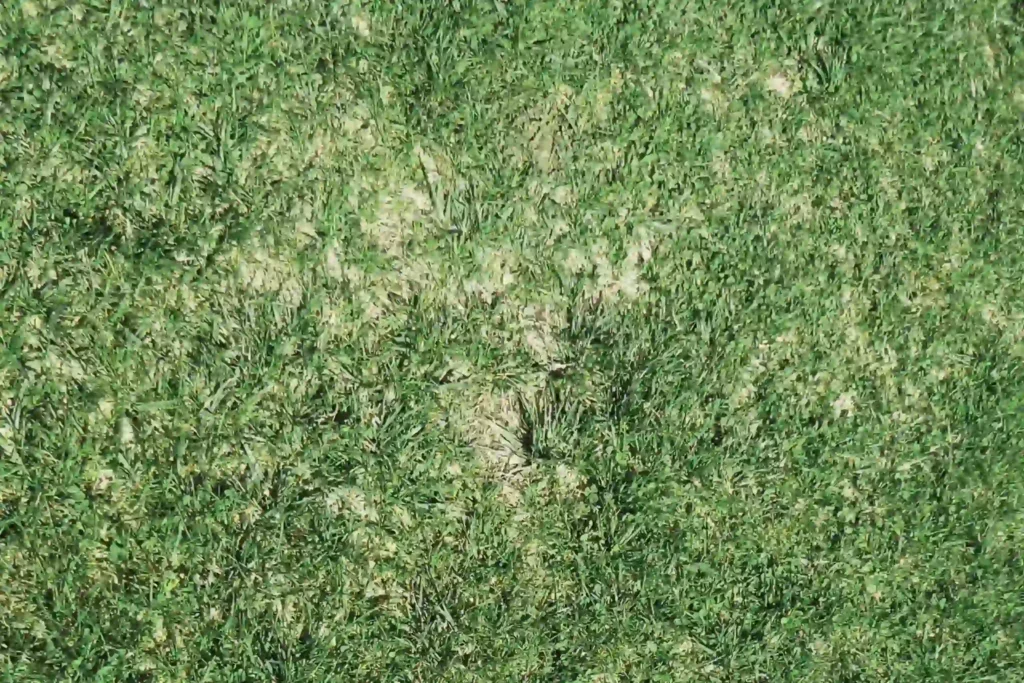
| How to fix it To alleviate any soil compaction, you will need to aerate your lawn. This simple process involves creating small holes in the soil so your grass can receive all it needs for optimal growth. Aerating your lawn is highly beneficial for those whose lawns experience a lot of foot traffic, which can contribute to soil compaction. |
Burns
Another environmental factor that can cause pesky brown patches to appear on your lawn is excessive heat.
Too much sun can cause your grass to become ‘scorched’, resulting in dry and crisp grass.
A common cause of burnt grass is midday watering, as this means that your grass is wet during the hottest time of the day.
Watering at midday can be hazardous because the water droplets can intensify the heat on your grass blades, and also because water will evaporate at high temperatures before it has reached the soil.
| How to fix it An easy fix is to adjust your watering schedule based on the weather. This can be dependent on your grass type, soil, and climate, but generally early morning is the best time to water your lawn. However, if that doesn’t work, you will need to rake out the dead grass, overseed your lawn with high-quality grass seeds, and water regularly. Overseeding allows new seeds to germinate and help bring your lawn back to life. |
Over-fertilisation
It might be hard to believe, but yes, you can cause brown patches to appear if you have overfertilised your lawn.
Fertilisers generally contain a high concentration of salts, which can nourish your soil and promote growth when used correctly.
However, if used excessively, this can cause ‘fertiliser burn’ and leave your lawn dry and discoloured.
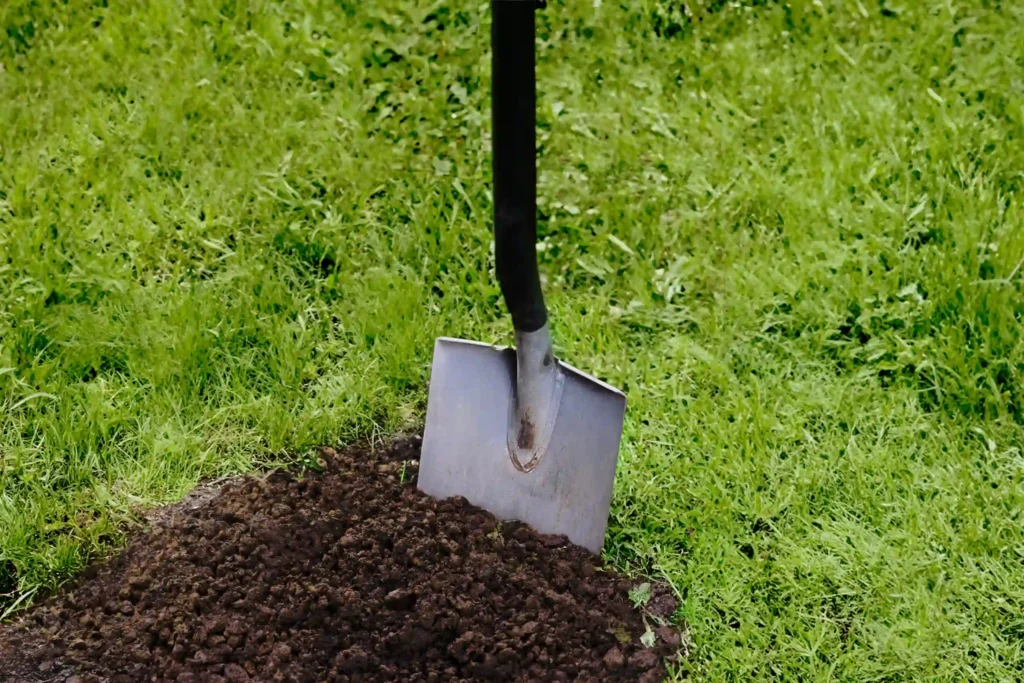
| How to fix it All fertilisers will recommend a required dosage on their packaging. It is best to follow this guideline to avoid any unnecessary damage to your lawn. Our expertly formulated Perfect Prep Fertiliser gently releases nutrients into the soil over time and is kind to your grass. |
Disease and pests
Diseases and pests can often be common causes of brown patches appearing on your lawn.
These are usually fungi, like brown patch and dollar spot, and grubs from the larvae of the chafer beetle.
Fungi tends to thrive in environments with too much water, humidity, and poor airflow.
Fungal infections cause discolouration to your grass by disturbing your lawn’s water and nutrient intake, as well as breaking down chlorophyll, which is essential for photosynthesis.
Meanwhile, grubs eat grass roots, which severs their connection to the soil and any nutrients, therefore leading to brown patches.
| How to fix it Fungi can easily be dealt with by applying a high-quality fungicide. Long-term, you may want to consider aerating your lawn to ensure that your soil is getting enough air. For your other pests, you can apply a specific insecticide, which should keep them at bay and away from your grass roots. |
Pet urine
If you’re a dog or cat owner, you may have noticed your lawn gets brown patches more frequently, and this is down to their urine.
Dog urine in particular contains high levels of nitrogen, which acts almost like a concentrated fertiliser, essentially ‘burning’ your grass.
The urine then sinks into the soil and causes damage to your grass roots, which over time can contribute to the brown patches you find on your lawn.
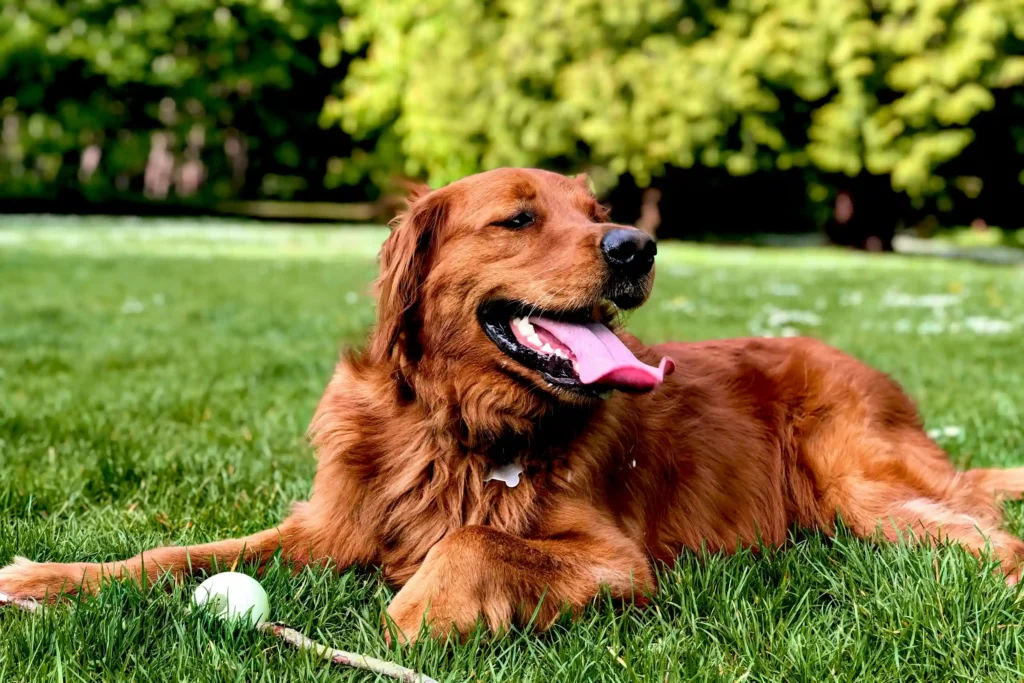
| How to fix it Of course, you cannot stop your four-legged friends from going outside to urinate. However, pets tend to have their favourite spots, so once they have been, you should pour water over the affected area to dilute any excess nitrogen and salts. |
Thatch build-up
Thatch build-up is another pesky contributor to the brown patches you may find on your lawn.
Thatch is essentially a build-up of dead and decaying plant materials that prevents nutrients and water from reaching the roots of your grass.
In addition, weeds, fungi, and grubs tend to thrive in areas where thatch build-up has been left untreated, all of which can cause further damage to your lawn.
| How to fix it The process to remove thatch build-up is known as lawn scarification. This involves using an electric scarifier or a rake, depending on the size of your garden, to break up the thatch so it can easily be removed. Once you have successfully scarified your garden, your grass roots will be able to receive everything they need to return to full health. |
Over-watering
Giving your lawn too much water can lead to a variety of different issues, such as root rot, thatch build-up, and nutrient loss.
Pair these issues with the pests overwatering can invite, such as grubs and beetles, and you will more than likely find brown patches on your lawn.
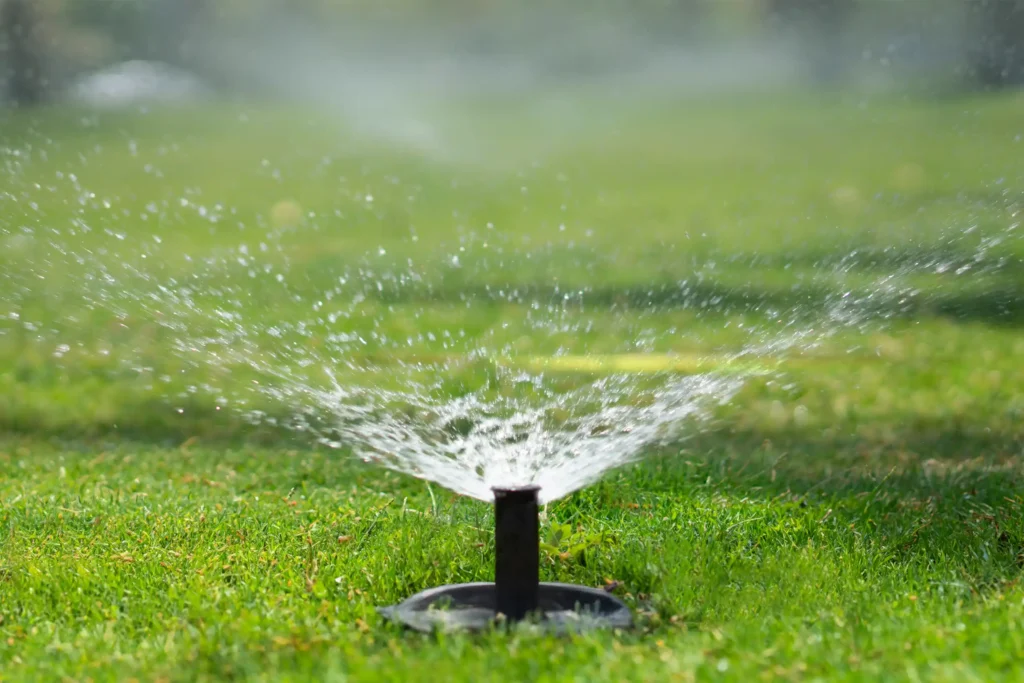
| How to fix it Ideally, you should adjust your watering schedule to prevent overwatering your turf. Early morning is generally the best time to water your grass, as this allows the water to have enough time to soak into the soil. However, you should avoid watering in the evening, as this will cause the soil to remain damp throughout the night and create the perfect environment for fungi to flourish. To avoid overwatering further, you should regularly check the weather, as this can inform your watering schedule. For example, if it is warm and dry, your lawn will be under more stress and need more water, but if its raining, you will not need to water. |
Is my grass dead or dormant?
It can be difficult to tell if your grass is dead or dormant, as usually the colours are not too dissimilar.
However, there are a couple of ways you can check:
The tug test. Gently grab a small section of brown grass in your hand and pull. If the grass does not resist and removes easily, then it is dead.
The water test. Regularly water a small patch of the affected area; if the grass shoots start to turn green, then it is dormant. However, if it remains brown, then it is dead and won’t respond to moisture.
It is also always worth inspecting your lawn to check for any hints of green, which would indicate that your grass is dormant and can be recovered with the correct care.
How do I treat brown patches on my lawn?
In order to effectively treat the brown patches on your lawn, you first need to identify the issue and the cause.
Once you have pinpointed the cause, whether it is pets, fungi, or nutrient deficiency, you can start treating your lawn with a targeted approach.
Overseeding your lawn is an effective way of treating brown patches, particularly if the grass has weakened and thinned.
Applying new seeds can introduce healthy and new grass to thicken your lawn and improve its appearance.
However, as with any other lawncare routine, you must apply the appropriate aftercare to see successful results.
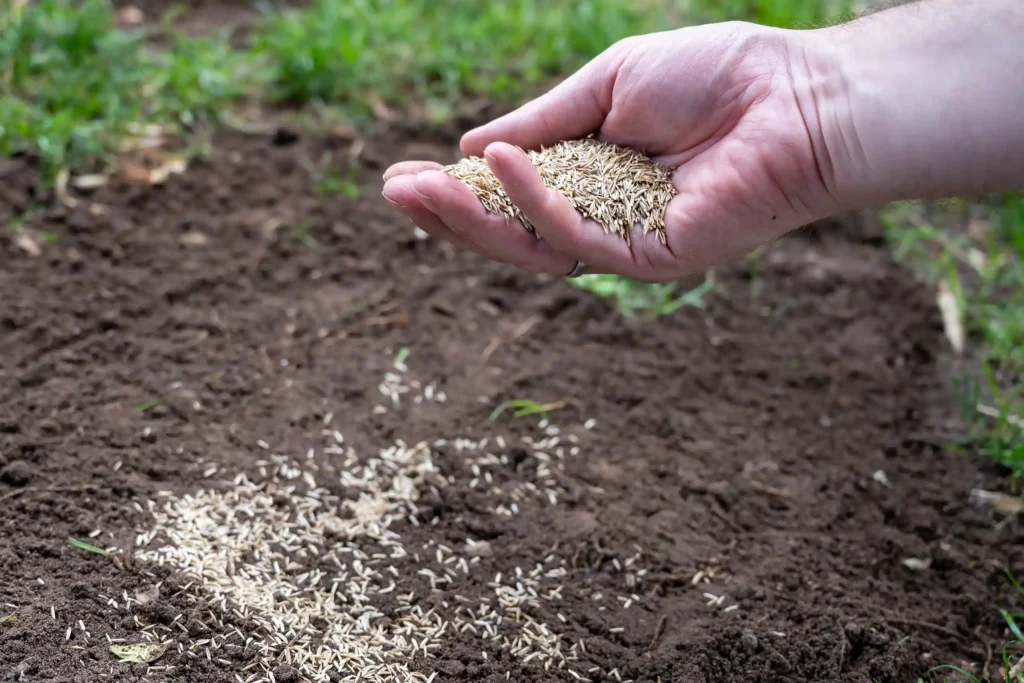
How long does it take for grass to recover from brown patches?
The time it takes for grass to recover depends on a variety of factors, such as:
- Grass type
- Cause of brown patch
- Weather conditions
- Type of treatment
For example, if the cause of your lawn’s brown patches was overwatering, your lawn should recover in a couple of weeks once you have adjusted your schedule.
However, if it is due to fungi or pests, this can usually take longer as the treatments are more intensive.
How to stop grass from browning in the future?
Preventing brown patches on your lawn requires consistent care and a proactive approach that ensures your lawn is kept healthy and is less at risk of unsightly spots.
Use the following tips to protect your lawn:
Follow a proper watering schedule. Water your lawn early in the morning, allowing enough time for the soil to absorb the water before the sun comes up. You also want to aim for deep, thorough watering, as this encourages deep root growth and grass resilience.
Avoid overwatering. Watering your lawn too frequently or with too much water can lead to shallow roots, seed movement, and diseases like root rot, which can cause brown patches.
Apply the correct amount of fertiliser. Choosing the right fertiliser is essential for promoting growth and nourishing your seeds. In addition, just as important is applying the correct amount of fertiliser. Avoid over fertilising, as this can burn the grass and lead to browning.
Mow regularly and at the right height. Aim to regularly mow your lawn and keep it at a height of about three inches high. This can help your grass grow denser and become more resilient to diseases and pests.
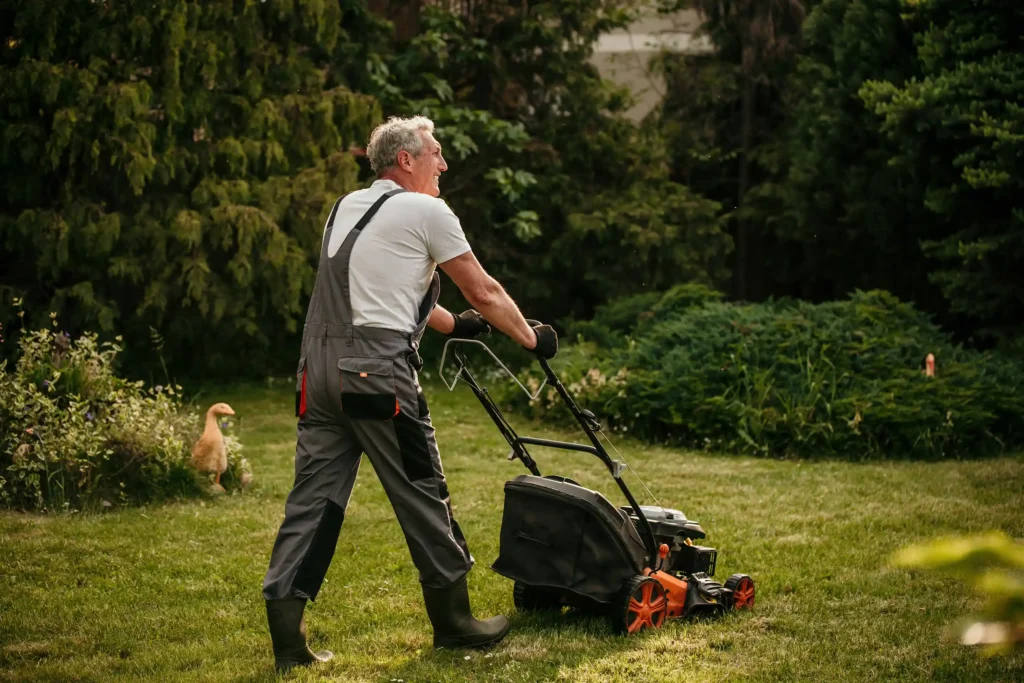
Aerate your lawn as needed. This can help to alleviate soil compaction, allowing nutrients, air, and water to penetrate the soil. It can also prevent thatch build-up and fungi growth.
Scarify your thatch. If you have noticed a build up of thatch, then it is best to tackle the problem as soon as possible to prevent further damage to your lawn. Scarifying can help remove thatch build-up and debris, allowing your grass to access the nutrients it needs.
Check regularly. Keep on top of your lawn’s health by regularly checking for any potential problems. By identifying any issues earlier, you can tackle them as soon as possible and maintain your turf’s health.
Ready to achieve a lawn free of brown patches?
Although brown patches are a common pain point for homeowners and seasoned gardeners, achieving a vibrant, green lawn couldn’t be simpler.
Understanding the causes of brown patches on your lawn and the effect they can have is the first step towards effective treatment.
With the right care and attention, you can restore your grass back to health in no time.
To help you get started, why not take our quiz to find the best products to support your journey to a lush green lawn today?
